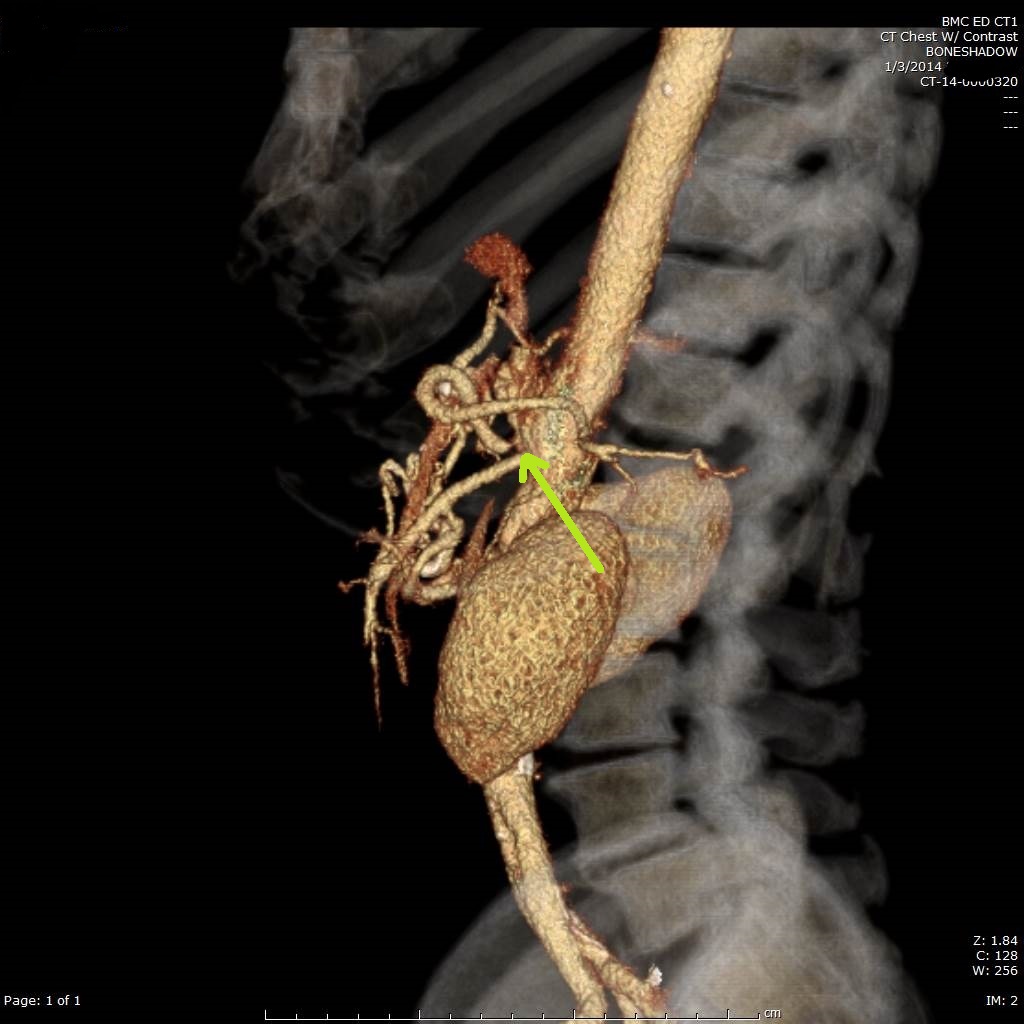Back to 2016 Annual Symposium ePosters
Celiac Artery Avulsion from Blunt Force Trauma Managed with Aorto-Celiac Bypass
Matthew Kronick, M.D., Andrew Doben, M.D., Marvin Morris, M.D., Ronald Gross, M.D., Amanda Kravetz, M.D., Jeffry Nahmias, M.D..
Baystate Medical Center, Springfield, MA, USA.
Objectives: Traumatic celiac artery injuries are rare and highly lethal with the vast majority caused by penetrating trauma. Injuries as the result of blunt trauma are exceedingly rare with only 10 reported cases. Injury patterns described include intimal flaps, pseudoaneurysms, and complete avulsions. Notably only 3 cases of complete celiac artery avulsion due to blunt trauma are reported in the literature. We report a case of a survivor of complete celiac artery avulsion from blunt trauma managed by open bypass and will present a review of the literature and summary of management options.
Methods: Our patient is a 75-year-old male with history of atrial fibrillation on Rivaroxaban who was struck by a motor vehicle. CT imaging demonstrated multiple rib fractures and a celiac artery injury with contrast extravasation and associated hematoma. Initially endovascular treatment was attempted however attempts to traverse the injury were unsuccessful, thus he underwent a laparotomy and aorto-celiac bypass with a Dacron graft due to concerns for hepatic ischemia. The celiac stump was over sewn. A prolonged hospital course ensued with complications including pancreatic leak with pseudocyst formation, pneumonia, acute kidney injury, and splenic artery pseudoaneurysm managed by embolization and exclusion. The patient survived and is now home 20 months after his trauma.
Results: Celiac artery injuries carry a high reported mortality with rates of 38-62%. Only roughly 6% of these injuries result from blunt force trauma. Injury types described include intimal flaps, pseudoaneurysms, or outright avulsions. Management options depend on the type of injury and have included observation, medical therapy with anti-coagulants, endovascular stenting, open ligation, and now open surgical bypass when there is insufficient collateral flow to the liver. The ideal management option is dependent upon the injury type and patient stability.
Conclusions: Complete celiac artery avulsion from blunt trauma is an extremely rare and devastating injury. The patterns of blunt celiac artery injury vary widely as do the management options. We herein describe the successful management of celiac artery avulsion resulting from blunt trauma with open surgical bypass. 
Back to 2016 Annual Symposium ePosters
|







